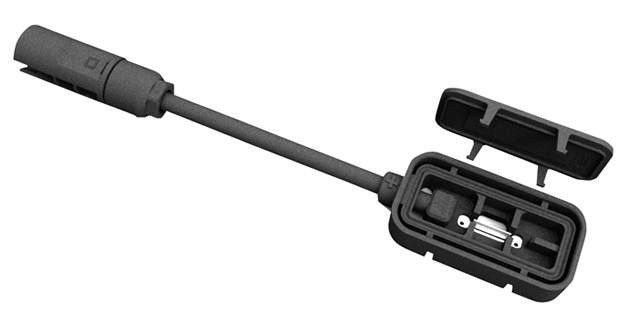Cost-effective photovoltaic junction box housings
Case Study

Junction boxes are installed by photovoltaic (PV) manufacturers directly on to the back of every PV panel and serve as the interface between the conductor ribbons on the panel and the DC input and output cables.
They contain bypass diodes to protect the PV panel from reverse current during hours of darkness, if the panels are in shade or if covered by debris such as leaves, for instance.
As part of ongoing efforts to help reduce the cost of PV module production, the TE Connectivity Solar Business Unit of Shanghai, China, recently embarked on a project to redesign junction boxes. "We recognized that the redesign of a junction box would deliver substantial benefits, as the cost of this critical reliability component is significant, whilst its durability and performance is vital to customer satisfaction," explains Peter Ying, senior manager of product development, CIS Solar.
Noting that junction box housings would typically consist of several parts used to encase, protect and secure the diode, TE Connectivity developed a more compact and cost-effective design whereby the connecting wires are directly encapsulated in a polymer resin using overmolding technology. The design helps save both assembly costs and ensures the durable encapsulation of the diode.
Initial research by development engineers at TE Connectivity revealed that the maximum long-term service temperature of polyphenylene oxide (PPO), a material commonly adopted for standard junction box housings, was insufficient for the direct overmolding of the electrical components. Typically, during a reverse current, a by-pass diode will heat up to temperatures close to 100°C—temperature levels that are approximately the same as the RTI (relative temperature index) of PPO.
TE Connectivity therefore turned to DuPont material specialists in Shanghai for the right solution for the job. By proposing DuPont™ Zytel® FR50 BK505, a 25% glass-fiber reinforced, flame-retardant polyamide 66 resin, they were able to provide a material with a significantly higher electrical RTI (at 130°C), a UL-94 flammability rating of 5VA and a comparative tracking index (CTI) of up to 250 volts—properties that were in line with TE Connectivity requirements for the housing. The material's high mechanical strength and ease of processing for overmolding presented further criteria for its specification.
Molding trials and subsequent testing of prototypes according to Underwriters Laboratories (UL) and TUV standards at the start of 2011 confirmed the material's suitability for the application and the overall functionality of the design. The junction boxes have since been certified as complying to the ANSI / UL 1703 and DIN V VDE 0126-5 industry standards.
"UL and TUV certification is an important milestone in the development of our redesigned junction boxes", confirms Peter. "The role played by Zytel® and the DuPont specialist in China in achieving this certification cannot be overstated."
The junction boxes are now commercially available globally for use by PV manufacturers. TE Connectivity Solar Business Unit hopes to leverage the knowledge gained from the redesign project, and particularly the high performance of Zytel® nylon resin when used for the encapsulation of electronic components, to other junction box models within its range.
